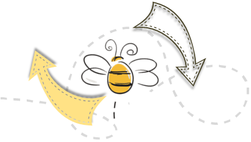Vinyl Creations
Baubles . Bottles . Bags . Buckets . Boxes . Tubs . Jars . Library . Design . Vehicle . Window . Door . Mirror . Glass . Wall
|
Vinyl Creations
Vinyl is not a natural substance but is a synthetic man-made material. It is a type of plastic that is made from ethylene (found in crude oil) and chlorine (found in regular salt). When processed, both the substances are combined to form Polyvinyl Chloride (PVC) resin, or as is commonly referred to - Vinyl. Vinyl was first invented in 1920 by scientists who wanted to develop a material that would help to manufacture everyday products that were easier to make, more durable, and cheaper than what was available. Today, Vinyl has become the second largest manufactured and sold plastic resin in the entire world. Vinyl is resistance to moisture and humidity. It is a very strong and durable plastic material. Vinyl can be manufactured in a variety of colors, both transparent and solid. Vinyl is a very low cost material to produce. Vinyl is a plastic material, which unlike other plastics, can easily be recycled. Because of the durability of vinyl, products made from this material have a long life span. Add to this the fact that the vinyl can then be recycled, translates into an even longer life of the vinyl plastic resin. Vinyl is a very environment friendly material, not only because it can be recycled, but also for many other reasons. Vinyl helps in the preservation of environmental resources as 57% of vinyl is made from common salt, which is a renewable natural substance. Non-replenish able resources such as crude oil only account for 43% of vinyl resin, thus making it nature friendly. In comparison to various other materials used by the packing industry, vinyl requires lesser amounts of natural resources to make, utilizes much lesser energy for manufacture, and also releases lower emissions into the environment. Thus vinyl, a synthetic manmade material, has truly revolutionized the entire plastic resin industry. Thank you Rose Foundation. |
|
How to apply vinyl: Clean surface area with cloth where you want to stick it. Make sure it’s dry. Peel the vinyl onto the transparent paper. Discard the slippery backing. Place your sign in the correct position by rubbing your fingers over the vinyl slowly starting from one corner and working your way diagonally across the surface. If you get bubbles rather lift before sticking all of it down. Don’t lift too many times or it the glue will become compromised. Happy sticking. Click here to see some tutorials on YouTube.







